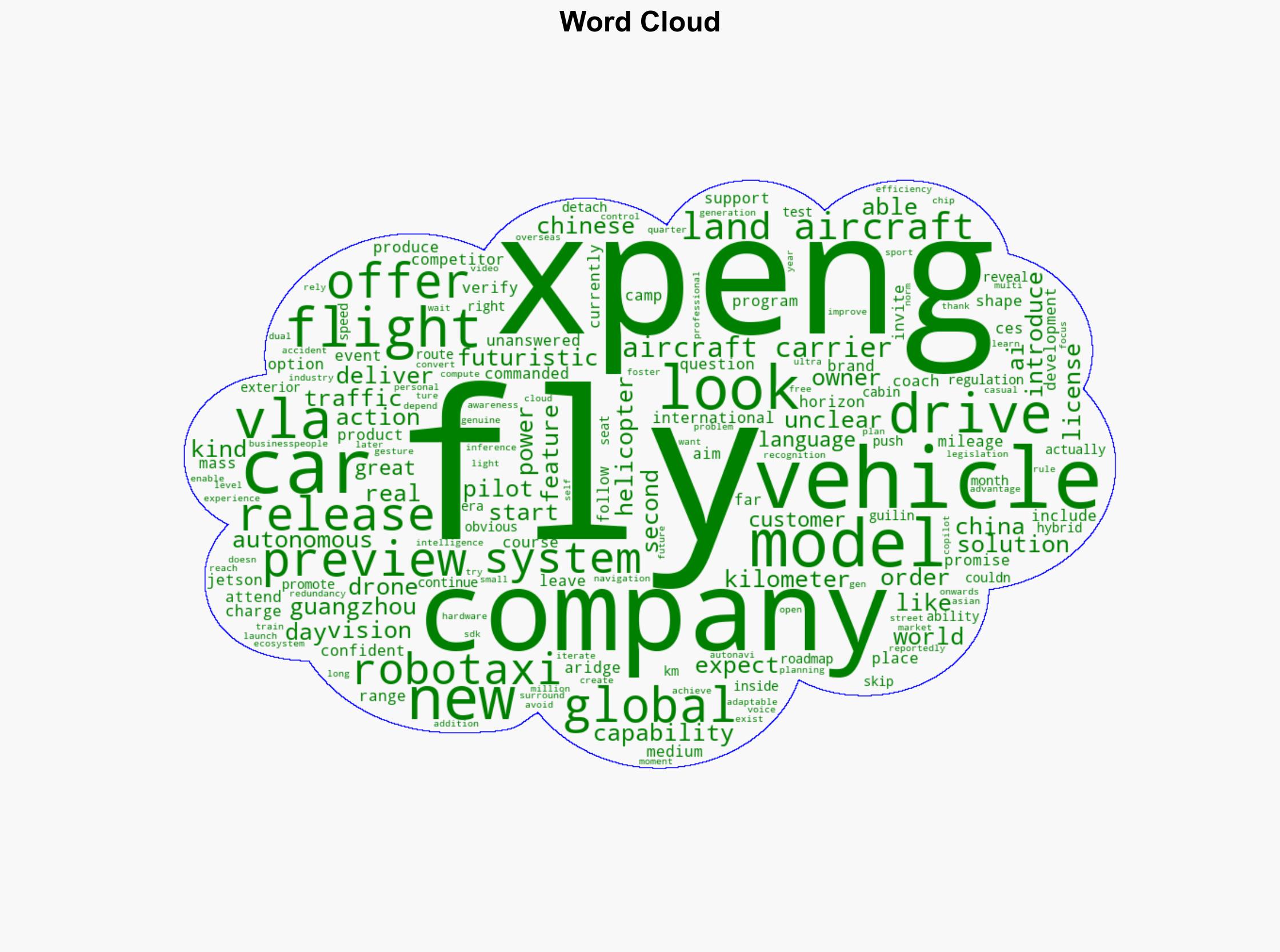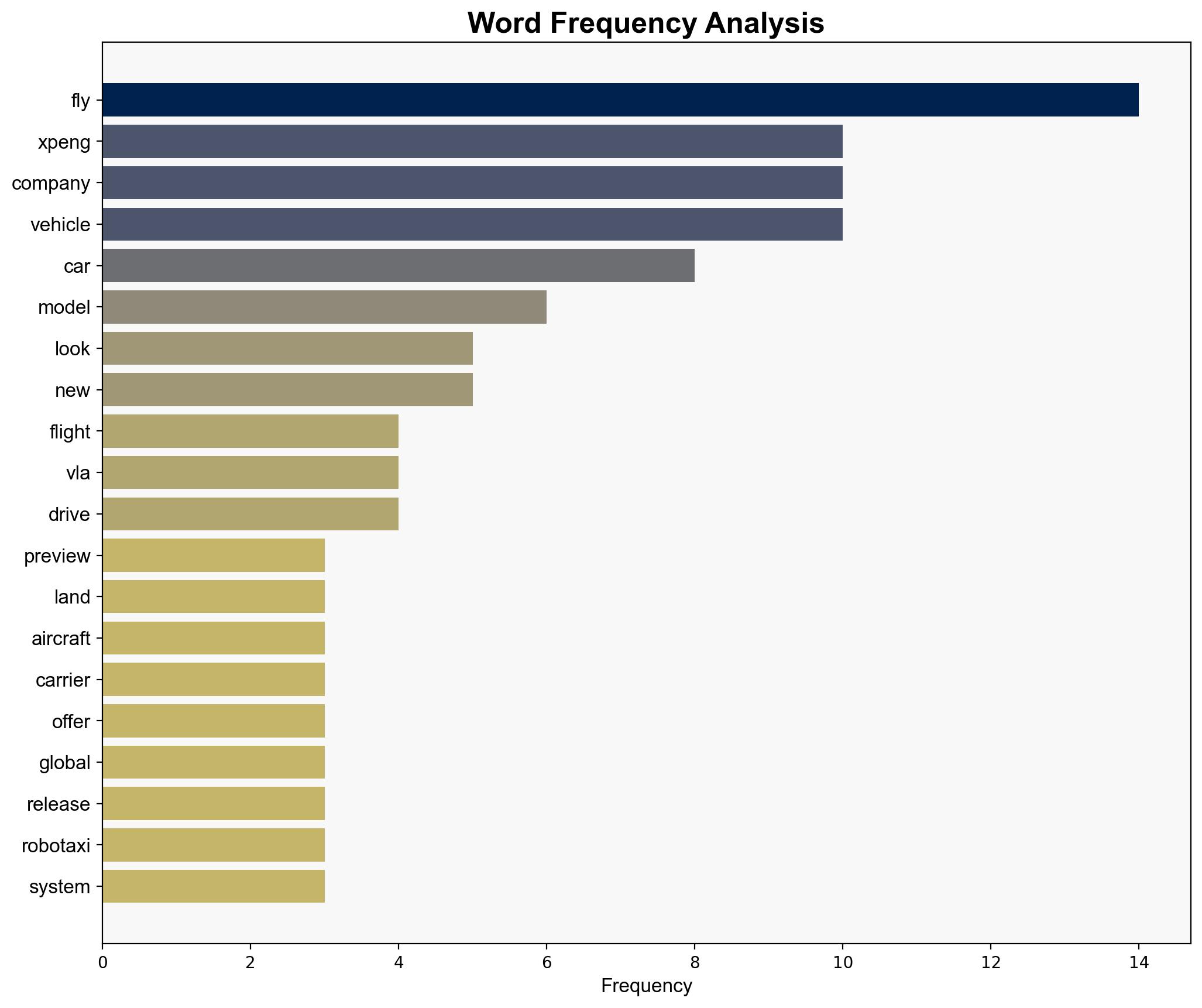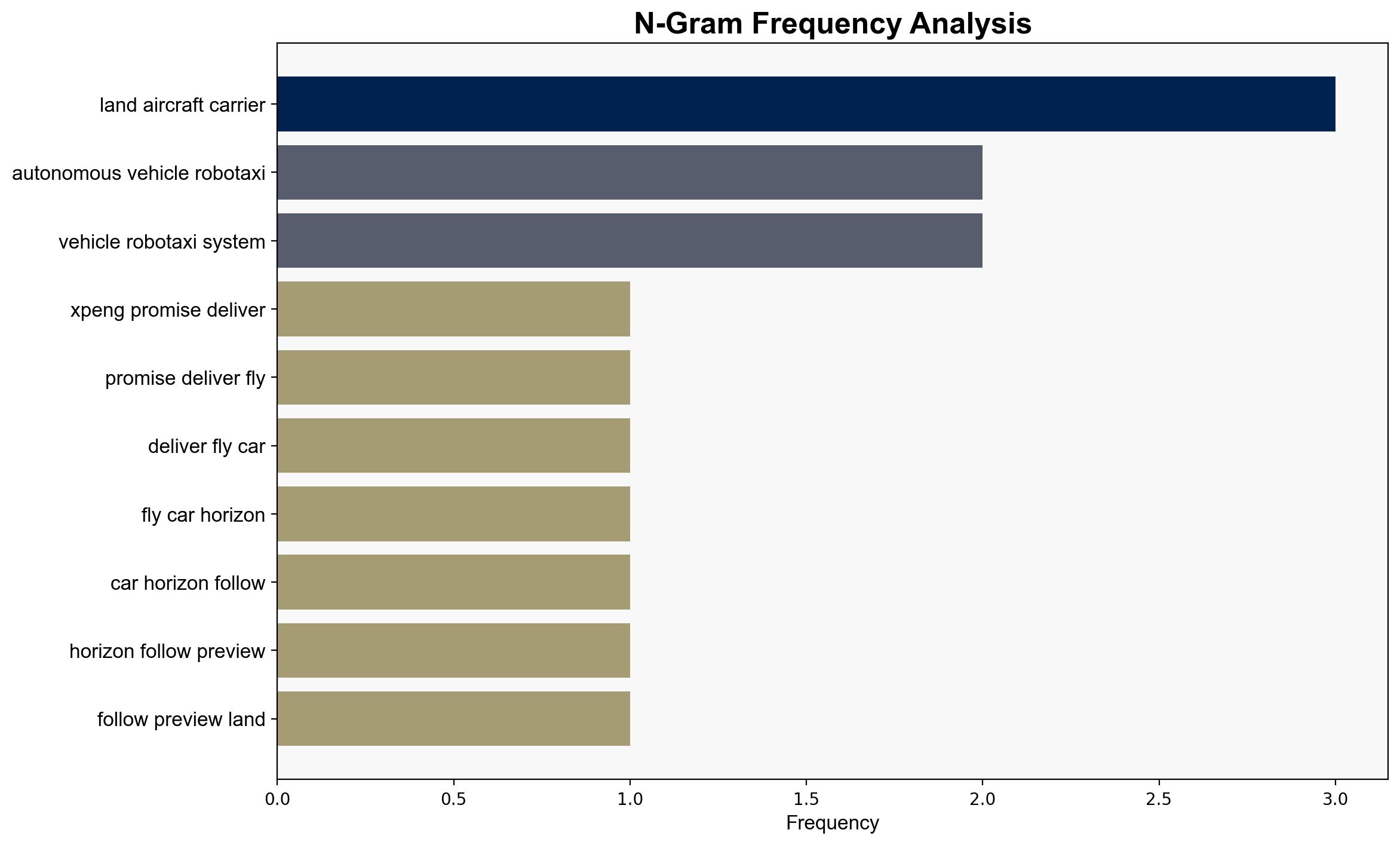Xpeng Promises To Deliver First Flying Car In 2026 With More On The Horizon – BGR
Published on: 2025-11-05
Intelligence Report: Xpeng Promises To Deliver First Flying Car In 2026 With More On The Horizon – BGR
1. BLUF (Bottom Line Up Front)
Xpeng’s announcement of delivering a flying car by 2026 presents both an innovative leap and significant uncertainties. The most supported hypothesis is that Xpeng is leveraging this announcement to position itself as a leader in the emerging flying car market, despite potential regulatory and technological hurdles. Confidence level: Moderate. Recommended action: Monitor regulatory developments and technological advancements in the flying car sector to assess feasibility and market readiness.
2. Competing Hypotheses
1. **Xpeng is on track to deliver a viable flying car by 2026.** This hypothesis is supported by Xpeng’s ongoing development efforts, testing routes, and strategic partnerships aimed at overcoming technological challenges.
2. **Xpeng’s announcement is primarily a strategic marketing move to boost its brand image and investor confidence, with actual delivery by 2026 being uncertain.** This hypothesis considers the significant regulatory, technological, and market readiness challenges that may delay or alter the timeline.
3. Key Assumptions and Red Flags
– **Assumptions**: It is assumed that regulatory frameworks will adapt to accommodate flying cars by 2026 and that technological hurdles can be overcome within the projected timeline.
– **Red Flags**: The lack of detailed regulatory plans and the absence of a clear path to mass production are significant concerns. The ambitious timeline may not align with current technological capabilities.
– **Blind Spots**: Potential geopolitical tensions affecting international partnerships and supply chains are not addressed.
4. Implications and Strategic Risks
– **Economic**: Successful delivery could disrupt traditional automotive and aviation markets, creating new economic opportunities and challenges.
– **Cybersecurity**: Increased reliance on AI and autonomous systems in flying cars could introduce new cybersecurity vulnerabilities.
– **Geopolitical**: International regulatory differences could lead to market fragmentation, impacting global adoption.
– **Psychological**: Public acceptance of flying cars may be hindered by safety concerns and regulatory uncertainties.
5. Recommendations and Outlook
- **Monitor**: Track regulatory developments and technological advancements in the flying car sector.
- **Engage**: Collaborate with regulatory bodies to shape policies that support innovation while ensuring safety.
- **Scenario Projections**:
– **Best Case**: Regulatory frameworks adapt smoothly, and Xpeng delivers a viable product by 2026, leading to rapid market adoption.
– **Worst Case**: Technological and regulatory hurdles delay the project significantly, damaging Xpeng’s credibility.
– **Most Likely**: Incremental progress with partial market entry by 2026, contingent on regulatory approvals and technological milestones.
6. Key Individuals and Entities
– Xpeng (Company)
– Competitors such as Jetson (Company)
7. Thematic Tags
technological innovation, regulatory challenges, market disruption, cybersecurity risks





